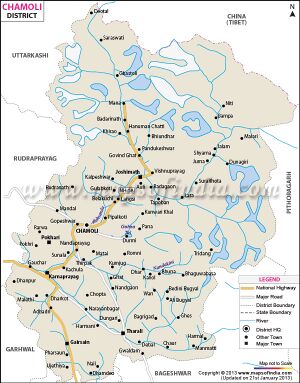Lokpal
| Author:Laxman Burdak, IFS (R) |

Lokpal (लोकपाल) is a historical place in Chamoli district of Uttarakhand, India. It is site of a religious Pond called Hemakunda, associated with Guru Govind Singh. [1]
Origin
Variants
History
Hemkund Sahib (also spelled Hemkunt), formally known as Gurudwara Shri Hemkund Sahib Ji, is a Sikh place of worship and pilgrimage site in Chamoli district, Uttarakhand, India. It is devoted to Guru Gobind Singh (1666–1708), the tenth Sikh Guru, and finds mention in Dasam Granth, a work dictated by Guruji himself. With its setting of a glacial lake surrounded by seven mountain peaks, each adorned by a Nishan Sahib on its cliff, it is according to the Survey of India located in the Himalayas at an elevation of 4,632 meters (15,197 feet).[2] It is approached from Govindghat on the Rishikesh-Badrinath highway. The main town near Gobindghat is Joshimath.
Hemkund is a Sanskrit name derived from Hem ("Snow") and Kund ("bowl"). Dasam Granth says this is the place where Pandu Raja practiced Yoga. In addition, the Dasam Granth says God ordered Sikh Guru Gobind Singh to take bath while he was in deep meditation at the mount of Hemkunt. [3]
लोकपाल, उत्तराखंड
लोकपाल (AS, p.821) गढ़वाल, उत्तराखंड का ऐतिहासिक स्थान है। जोशीमठ से आगे सातवें मील से लोकपाल के लिए मार्ग जाता है। समुद्र तल से इसकी ऊंचाई लगभग 14200 फुट है। सिक्ख धर्म की परंपरा के अनुसार यह गुरु गोविन्द सिंह के पूर्वजन्म को तपःस्थली है। लोकपाल में हेमकुण्ड नामक [p.822]: एक सरोवर है। पास ही लक्ष्मण जी का एक मंदिर तथा एक गुरुद्वारा है। इस स्थान के लिए विश्व प्रसिद्ध 'फूलों की घाटी' से होकर मार्ग जाता है।[4]
External links
References
- ↑ Aitihasik Sthanavali by Vijayendra Kumar Mathur, p.821-822
- ↑ Hemkund On Googlemap
- ↑ Robin Rinehart (2014): The Dasam Granth. In Oxford Handbook of Sikh Studies. Oxford: The Oxford University Press, p.138
- ↑ Aitihasik Sthanavali by Vijayendra Kumar Mathur, p.821-822

